Podcast: Play in new window | Download (Duration: 28:48 — 34.3MB)
Subscribe: Apple Podcasts | Spotify | Amazon Music | Android | Pandora | iHeartRadio | JioSaavn | Podcast Index | Email | TuneIn | RSS | More
By Davy Crockett




The classic Strolling Jim 40 came back into ultrarunning focus during early May 2021, when Andy Jones’ remarkable record was finally broken by Zack Beavin, of Lexington, Kentucky. The story of Strolling Jim must be told along with the progression of its famed course record.
Who was Strolling Jim?
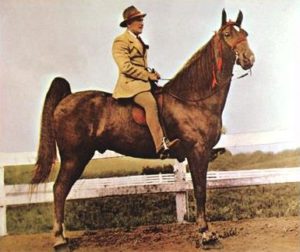

Strolling Jim (1936-1957) was the first Tennessee Walking Horse to become a National Grand Champion show horse for his breed. He was first trained to pull a wagon and a plow until he was noticed by a well-known Walking Horse trainer, William Floyd Carothers (1902-1944), who owned the Walking Horse Hotel in Wartrace, Tennessee. Carothers thought the horse had potential and bought him for $350 and started training him.
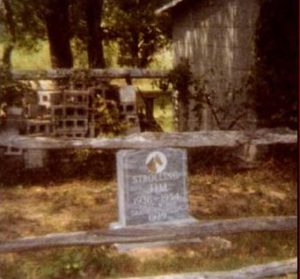

Idea for a Race
In 1979, Gary Cantrell (1954-), of Shelbyville, Tennessee, was an accounting student at Middle Tennessee State University. He was a veteran of eight marathon finishes and wanted to run in an ultra. But at the time, there were few being held in the South. So, he decided to put on his own ultra for his Horse Mountain Runners Club who trained around the Wartrace, Tennessee area. John Anderson, 29, a sub-3-hour marathoner from Bell Buckle, Tennessee remarked, “Gary and I wanted to run an ultramarathon and so we decided to put on one of our own. He got out the maps and lined out a course. At first, I thought we should call it the ‘Idiots Run,’ but I believe Gary came up with a more appropriate name.”
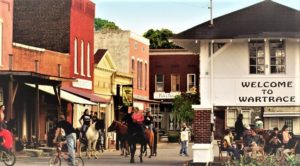



Cantrell added, “It’s an isolated backwaters place that has changed little in this century.” He was surprised that many wanted to run the difficult race. “Six or eight doctors will be in the race and that sort of surprised me. You’d think of all people they’d know better.”
Inaugural Race Entrants
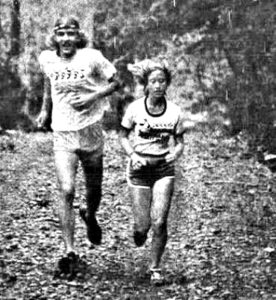

Ronald Moore (1946-), of Hermitage, Tennessee signed up for the race and planned feed on plenty of dates along the way. He said, “I intend to try and blend in with the course and just try to finish. I’ve been looking for a challenge and this course is really an obstacle. I guess I am kind of foolish for trying at race this far. The fellows at work think I’m crazy, but if I make the 40-mile run, then I would like to shoot for a 100-miler.”
Cantrell had been training about ten miles a day with a 30-mile run every-other week. His wife, Mary, was also among the entrants. She had been training up to 70 miles a week and said, “I began doing more training than Gary was, and I thought to myself, ‘Well if Gary thinks he can do it, then I believe I can too. I guess I just got caught up in the excitement of it all and maybe I’m a little crazy.”
The 1979 Strolling Jim 40


The inaugural race was held on May 5, 1979. A pre-race spaghetti dinner was held the night before at the 62-year-old Walking Horse Hotel, Dozens of pictures of Tennessee Walking Horses adorned the dining room walls along with Strolling Jim’s bridle that he wore when he won his national title. Bluegrass musicians furnished entertainment during the dinner playing guitars, banjos, and fiddles.
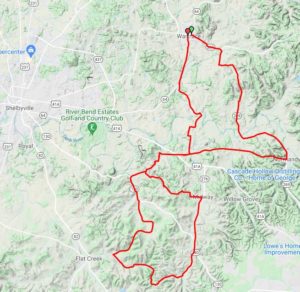



For that first year Cantrell used streamers to mark the course and set out water jugs every five miles. But crews were also required to drive along and provide support. Twenty-two runners started that first year and only two had finished an ultra before.
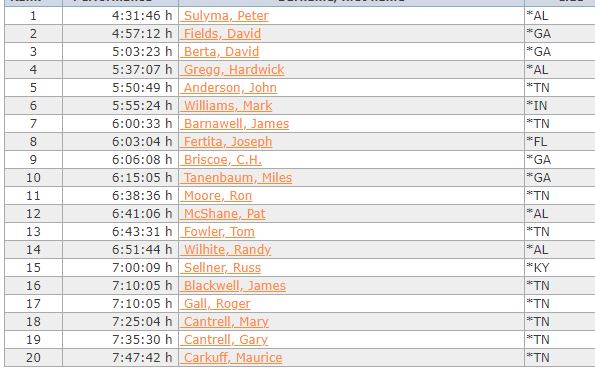

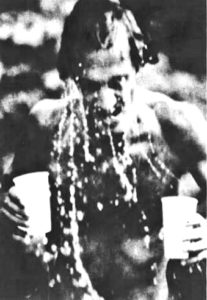

Despite the difficulty of the race, with 90 hills, Strolling Jim 40 continued to have a high finishing rate the next year in 1980 when 21 of 22 starters finished. The winners were again Peter Sulyma with a new course record of 4:23:12 and Mary Cantrell with 6:46:32. In 1981 Sulyma accomplished the “three-peat” by triumphing again in 4:36:18 by a wide margin. The race that year grew to 27 starters with 25 finishers. Cantrel warned the crews that if they stirred up dust on the gravel roads, they would be shot. A cow in the road held up the race that year for a few minutes. H.B. Reed, age 57, ran 20 miles of the race barefoot and finished last.
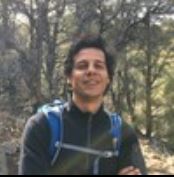

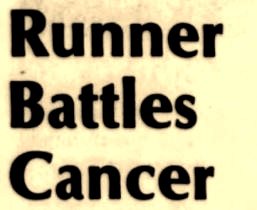

Sulyma returned to Strolling Jim in 1984 and finished in 5:57:10. He also finished a 100-miler that year with an impressive time of 17:30:55. His cancer went into remission and he continued to run ultras until 1991 when he finished 5th at Strolling Jim with 5:06:51 at the age of 45.
Strolling Jim Grows
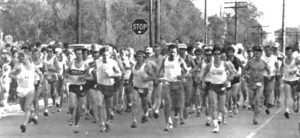



Some aid was provided that year by the race, but crews also drove along, offering liquids to all the runners. Even local spectators were out in their trucks with water and Gatorade. Cantrell had a great view of the front-runners, riding in the lead car. He knew it would be a good race that year and said, “The only problem I can foresee is keeping the sponsors out of the beer kegs until the runners finish.”
At the finish, Cantrell presented each runner with a card that had their time and place on it. Jabar wrote, “After the final runners came in, everyone merged on the beer and food. Various public official spoke and gave out trophies, and then Gary called everyone up to present them with individual trophies. It is always nice to get something other than a shirt. After the ceremony, all returned to the feast and talk of this and future runs.” A record 55 runners finished in 1983.
1985 Record Assault
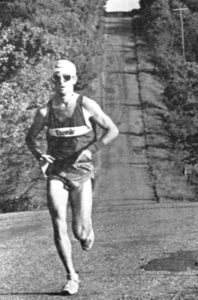

By 1985, Strolling Jim was attracting elite ultrarunners who had their eyes on breaking Sulyma’s 1980 course record of 4:23:12 which had a special status among southern ultrarunners. Many had tried to break it before, but no one had come seriously close. But Tom Zimmerman, age 27, from Minnesota came onto the 1985 stage. Zimmerman was a solid 50-mile ultrarunner who would place 6th later that year against international competition at London to Brighton. Also in the Strolling Jim field of 72 runners, were dominant southern ultraunners, Ray Krolewicz (1955-) of South Carolina and Steve Warshawer (1957-) of Georgia. The race had become so popular that the number of entrants started to be capped that year.
Krolewicz, as usual blasted into the lead with a first mile of 6:33 up several hills, followed by Zimmerman nine seconds back and Warshawer, another thirteen seconds behind. At that point Zimmerman shifted into another gear and left the field behind. A bull chased Sulyma and Washawer for about a half-mile at 6:15 pace before it “crashed and burned on the side of the road, another victim of the tough course.”
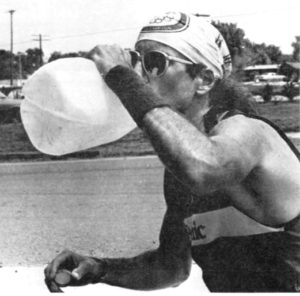

Cantrell wrote, “As Zimmerman rippled on toward the last major obstacle (the dreaded ‘Walls’ from 29 to 33 miles) he took his first taste of Tennessee heat. Three miles of flat exposed backtop allowed the sun to work on Tom. He had run off and left the field so far behind that even his aid crew couldn’t keep up. He stepped on the gas and flew up the Walls well under record pace.”
But with temperatures above 80 degrees, Zimmerman sagged as he continued to try to press hard. “When he hit the blacktop, two miles from the finish, the record was still in his hands. But two miles can take an eternity, and those two miles were too much.” He finished in 4:23:29, just 17 seconds over the record. Ten yards past the finish, he collapsed in a heap and requested fluids. He had said it was the most painful race of his career.
1987 Course Record Broken
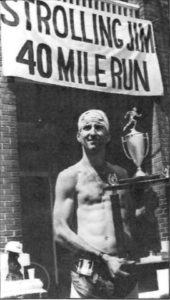

Cantrell reported, “It was the favorite, Tom Zimmerman, who made the move. Apparently satisfied with his study of the competition, he set out to see who was ready to play hardball. As Zimmerman powered effortless away, the tight pack strung out in a line.” Others tried to catch him, but by mile 20 Zimmerman was ahead alone, passing the halfway mark in 2:01:06.
Heading toward the finish, he powered through the Walls and overcame the final 10 km of hot road without shade. “The merciless sun bore down on him. Scorching, searing heat blasted him from the road. Something gave. Then it gave a little more. Next thing, this awesome machine that had whipped over meatgrinder hills like so many highway overpasses was struggling along at eight-minute miles.” But he did it! He finished with a new course record of 4:15:22.
Charlie Trayer: The Next Record Holder
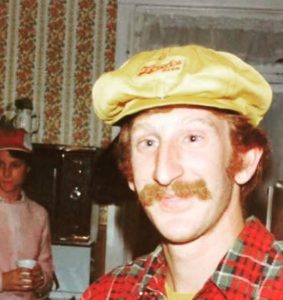

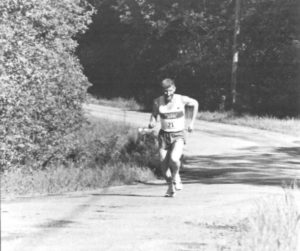

Trayer returned to Strolling Jim the next year, 1989, even more determined. Zimmerman could not defend his title because of a stress fracture, so Trayer was the clear favorite. He charged to the front as usual. “Sparks flew from Charlie’s feet as he continued to scorch the road.” He reached 10 miles in 57:20. But by 17 miles Steve Warshawer passed him, starting a classic battle, running sub-six-minute miles.
At mile 22, Trayer went back in the lead. Warshawer closed the lead to 40 seconds at the “Walls.” The race was decided on the most brutal section of the course. Twice Trayer surged, and twice Warshawer responded. Cantrell wrote, “Charlie’s trademark is a hard-working style and a seeming imperiousness to pain. He threw himself into the walls at a furious pace.” Trayer pulled away and set a new course record by only one second in 4:15:27.
Sean Crom Lowers the Record Further
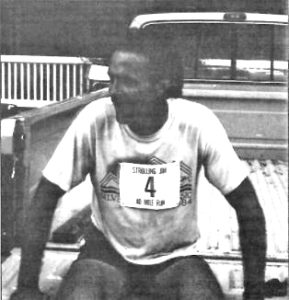

Trayer returned in 1990, determined to defend his title. But also there, was Sean Crom, (1956-), a civil engineer from Reno, Nevada. Crom was the reigning “ultrarunner of the year” with wins also at the Leadville 100 and American River 50.
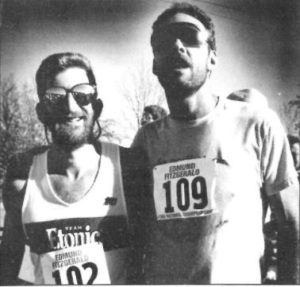

Trayer and Warshawer dogged Crom’s steps the entire way at Strolling Jim, but Crom opened gaps on the hills and pushed ahead of record pace. He said, “I ended up going out really fast and I was surprised no one came with me. I ran a comfortable place.” Cantrell reported, “Crom’s lead had mushroomed to seven minutes and suddenly he was nearly uncatchable. He pushed one of America’s fastest ultra course records even further into the realm of ‘unreachable.’” His new course record time was 4:12:17.
Andy Jones


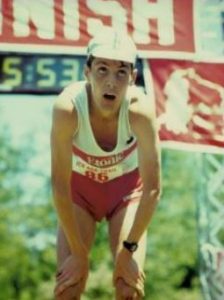

At age 28, in 1988, Jones, with only limited training on trails, burst on ultra scene, when he ran Ice Age 50 in Wisconsin. He hung with the overwhelming favorite, Tom Zimmerman, and then set a new Ice Age course record of 5:53. In 1990, Jones ran 50 miles in 4:54 at Golden Horseshoe 50 in Ontario, Canada, on a fast paved out-an-back course, just a few minutes off a World Record. At that time, it was the fourth fastest 50-miler ever ran.
1991 Strolling Jim Course Record for the Ages
In 1991, just a few days before Strolling Jim, Cantrell received a call from Jones confirming his entry into the classic ultra, in its 13th year. Cantrell was delighted, knowing that Jones had world-class speed. On race day, the weather turned out to be ideal for fast times, warm, cloudy, with a few short showers to cool the runners.
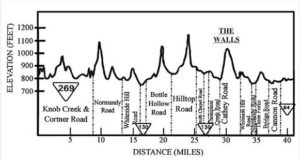

He hit the 20-mile mark in 1:54. Could the un-thinkable be accomplished at Strolling Jim, breaking the four-hour barrier? Jones later explained, “I realized at the halfway mark that I was having an extremely good day. I figured I ought to try for four hours since you never know when you’ll be ‘on’ like that again.” He cranked out the next five miles in less than 27:30. His marathon mark was 2:29. Four hours just might be possible.
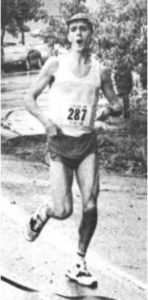

Jones crossed the finish line in 3:59:26. He smashed Crom’s “unreachable” course record by about 12 minutes and broke the four-hour barrier. “A smile burst across Andy’s face, the first change in his expression for the duration of the run. He had done the impossible. Then he leaned over and got sick, perhaps just to convince us he was a human. Strolling Jim saw not just a course record, but a redefinition of the race, as Andy Jones put in a run that ranks with the greatest performances of all time.”
Jones’ Later Running Career
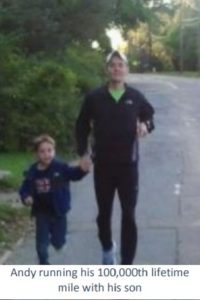

After that Jones went back to run occasional marathons. The last marathon result found for him was in 2007, when he ran a 2:47 at the Cincinnati Marathon at the age of 46. One can only wonder what he could have done if he would have continued running 100-miles in his prime and tried racing mountain trail 100s.
The Strolling Jim Record Lives On
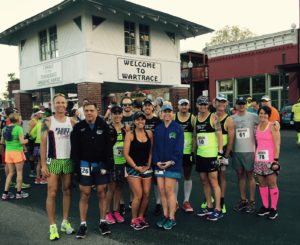

Zach Beavin
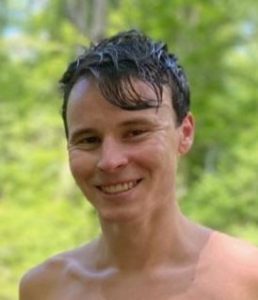

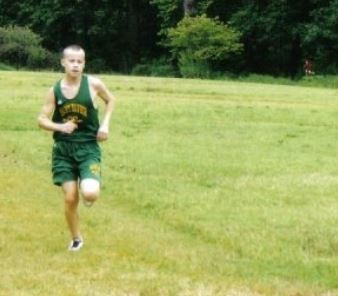

Out of college, he started running marathons and ran 2:18 in his 4th try. One summer, on a family vacation to watch the Olympic Trials in Eugene, Oregon, on the way he ran 31 miles around Crater Lake, the first time running that distance and came away injured.
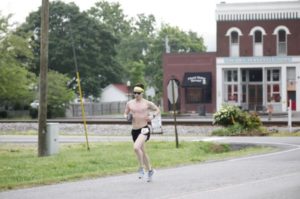

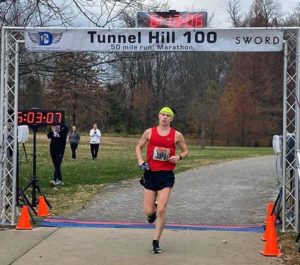

2020 was the year of the pandemic, only 30 runners ran Strolling Jim, and Beavin was not in the field because he was taking time off after running in the Olympic Marathon Trials. He set his sights to break the record in 2021. He did add multiple 20-30-mile runs per week into his training.
In November 2020, he impressed the ultrarunning sport by crushing the Tunnel Hill 50 course record with a time of 5:03:05, the fourth fastest American 50-mile time ever. (Jim Walmsley held the American best of 4:50:08, set in 2019). Beavin recovered quickly and focused on getting ready for the 2021 Strolling Jim. Leading up to the race, on social media, Andy Jones, the record holder, gave him advice.
Zack Beavin Goes After the Record
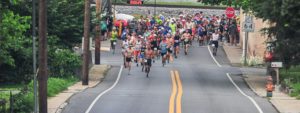

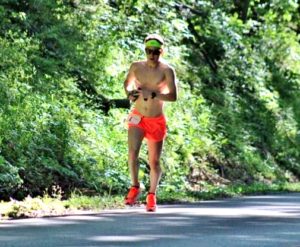

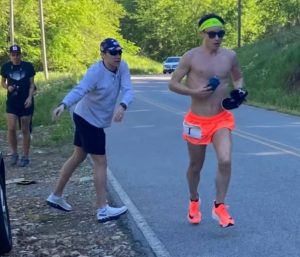

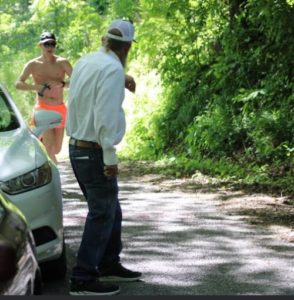

Beavin found a groove and was ahead of record pace at the half-way point and felt invincible at mile 25. He hit the marathon mark in 2:28 which was a new Strolling Jim marathon split record. He recalled, “When I made the turn into the infamous ‘Walls,’ I knew I was in a much better spot than I was in 2019. I swapped my bottle with my crew again and drew some energy from their cheers. I was still feeling strong enough to aggressively attack this brutal section of the course. As I attacked one hill after another, I was shocked and surprised at how well my pace was holding up.” He reached the 50 km mark about a minute faster than Jones’ record pace with ten miles to go.
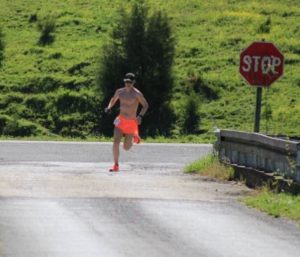

His crew screamed encouragement at the 35-mile mark. He made his last bottle swap at mile 39. He knew that the record would be his as he continued to run at six-minute pace. He wrote, “The tenths of a mile clicked past agonizingly slowly, and I focused on a building off in the distance that I thought marked the finish line.”
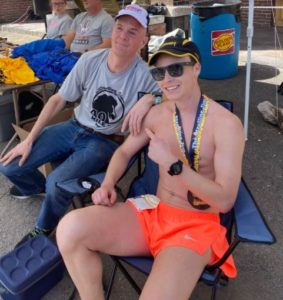

With 200 meters to go, Beavin found new life in his legs and let out a jubilant fist pump as he crossed the finish line in 3:55:44, breaking the 30-year Strolling Jim record by nearly four minutes. A kind bystander caught him and guided him to a chair. Beavin wrote, “He made sure my Jello legs safely found the seat because at this point they were basically useless. He was wearing a grey ‘sub 4’ Strolling Jim shirt, put a medal on me, and as soon as I had my wits about me, introduced himself as Andy Jones. I had obsessed over this record for years and just raced the ghost of this man for four hours, and here he was to congratulate me on breaking his unbreakable course record. It was a special moment.”
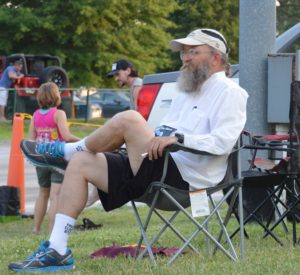

The classic Strolling Jim 40 had been conquered once more. Who will be the next?
Sources:
- Strolling Jim 40 Mile Run on Realendurance.com
- Strolling Jim results on arrs.run
- Nick Marshall, Ultra Distance Summary, 1979-1985
- The Tennessean (Nashville, Tennessee), May 4, 6, 1979, Apr 30, 1982, May 6, 1990, Apr 30, 1991
- Alabama Journal (Montgomery, Alabama), Apr 10, 1984
- Pensacola News Journal (Florida), Jun 18, 1982
- Ultrarunning Magazine, June 1981, July/August 1982-1991
- TrailRunning, “Laz Lake’s formula for gender differences in ultrarunning”
- Strolling Jim 40 – Course Record, 5:43 pace for 41+ Miles
- Laz Lake, Ultralist comment, Mar 2, 2021
- Run Your Mouth Podcast, “Antelope Children with Zack Beavin”
- The Adventure Jogger Podcast, “Zack Beavin: Strolling into Wartrace”

